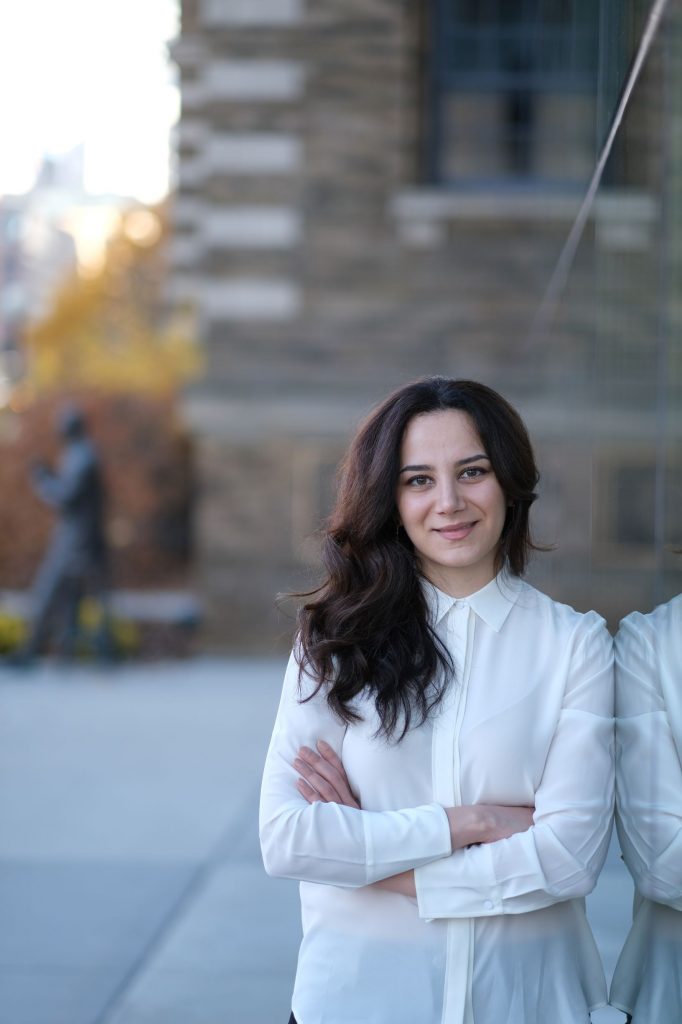Saba Rahimi is a PhD candidate in Biomedical Engineering at the University of Toronto. During the summer of 2020, she completed a research internship in Artificial Intelligence (AI) at Microsoft, working on applications of AI in Radiology. Here, Saba describes how she secured the internship, and what she learned as a biomedical engineer working at a technology company.
Securing the Internship
During my academic experience in the field of biomedical engineering, I have had the opportunity to work on several multi-disciplinary research projects. These range from designing an ultrasonic patch for insulin delivery (BSc thesis), to monitoring the usage of electrical devices to predict the behaviour of elderly Alzheimer’s disease patients (MASc thesis). Now for my PhD thesis, I am working on the scalpel free treatment of brain disorders with focused ultrasound.
Back in the summer of 2019, I worked on my first internship project utilizing AI for healthcare. We were interested in predicting treatment response in brain tumour patients undergoing radiation therapy, by training an AI model based on Magnetic Resonance Imaging (MRI) scans of the head. By providing an accurate prediction for the treatment outcome(s), clinicians can help patients make more informed decisions about potential therapeutic options.
While reviewing the existing literature on the interface of medical imaging and AI, I came across an interesting research paper, conducted by Google on AI-powered Lung-cancer detection. My curiosity took hold, and I messaged the author on LinkedIn with various questions. This interaction jump-started a series of subsequent networking sessions, and it helped me to secure a research intern position at Microsoft in the field of AI the following year.

What I did at Microsoft
My project at Microsoft was focused on reducing the cost of medical image annotation using AI algorithms. In a typical clinical setting, medical imaging experts are required to annotate micro/macro-level structures in a medical image. This can be a tedious process as there are large number of structures/images to process. By using AI algorithms like Active Learning, we only require a fraction of annotation by human, in order to predict what the rest of the annotations on images would look like. Our results showed that, when only 40% of medical images are labeled, satisfactory results could be achieved for the automated segmentation of structures in lung CT scans.
The parallel of graduate school and interning at Microsoft
I was amazed by the nature of healthcare projects at Microsoft and how heavily they are engaged in multidisciplinary fields. During my time at Microsoft, our team collaborated with pharmaceutical companies, radiation oncologists, and computational biologists.
Many graduate school rituals are also live and well at Microsoft. We had literature discussions, lectures on recent publications, and group discussions on the most recent AI and Machine Learning journals/conferences.
I was also amazed by how Microsoft made my virtual internship fun and engaging, from online Guacamole recipes on Zoom, virtual Yoga classes, to the keynote speaker of Malala Yousafzai on the Intern day. I also find it incredibly humbling to approach C-level executives at Microsoft, and they were always open to book one-on-one sessions to listen to my research ideas or hear about what I have done in my PhD project. I also had a chance to present the results of my internship project and hear their feedback and comments for the future steps.
What I learned working at Microsoft
In graduate school, skillsets such as conducting a thorough literature review, reproducing experiments, and breaking down complex research problems is innate in our training. Working as a researcher at Microsoft, I find these skillsets to be equally valuable and transferrable.
Over the course of this summer, I had a chance to work at Microsoft on the interface of Artificial Intelligence and medical imaging. It is truly rewarding to get involved in health-care projects for which engineering skills are required.
Acknowledgements
I’d like to thank my PhD supervisor Dr. Kullervo Hynynen for allowing me to take some time off during my doctoral studies to experience industry. My greatest acknowledgement to Dr. Sujeeth Bharadwaj, my mentor/manager at Microsoft, for his excellent supervision and mentorship during my internship. Thank you to Qin Dai for encouraging me to write about my experience and for his feedback on this article.
If you have any questions regarding my internship, you can reach me at saba.rahimi@mail.utoronto.ca


